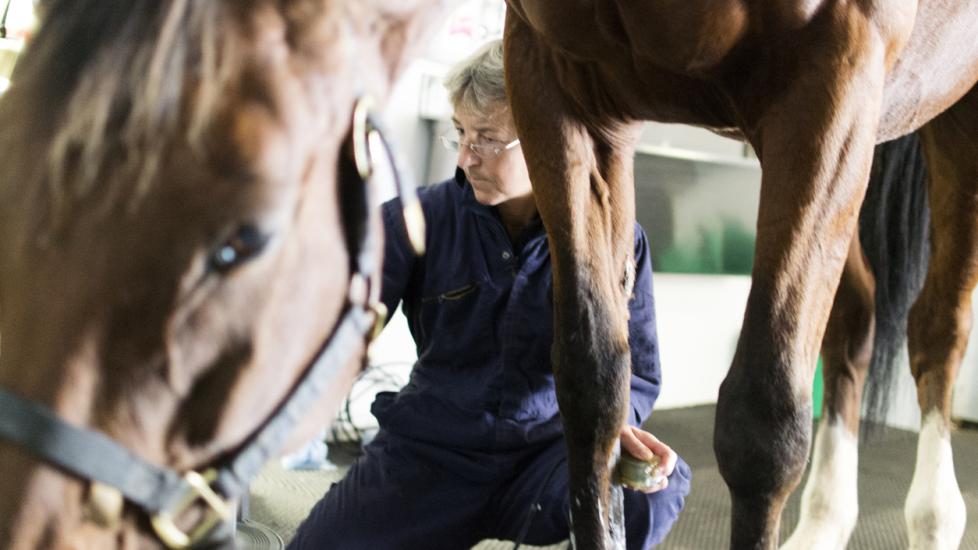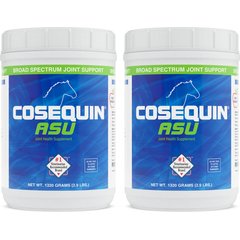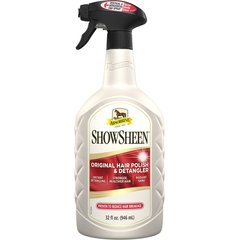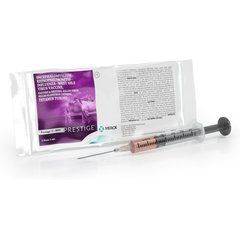Lameness in Horses
What is Lameness in Horses?
Lameness in horses refers to a change or abnormality in a horse's gait or stance. This change in gait can be caused by pain, a mechanical issue, or neurologic condition. The most common reason for a horse to become lame is due to pain stemming from the musculoskeletal system (including muscles, tendons, ligaments, bones, or joints) leading to abnormal movement at the walk, trot, or canter.
Lameness can affect individual horses of all breeds, ages, and levels, causing minor changes to complete loss of use.
Shop Horse Products
- Tribute Equine Nutrition Kalm N' EZ Pellet Low-NSC, Molasses-Free Horse Feed, 50-lb bag$25.49Chewy Price
- Nutramax Cosequin ASU Powder Joint Health Supplement for Horses, 2.86-lb tub, bundle of 2$279.98Chewy Price
- Absorbine ShowSheen Instant Detangling Hair Polish & Detangler Horse Spray, 32-fl oz bottle$17.84Chewy Price
- Prestige 5 + WNV Vaccine for Horses, 1-mL syringe$53.99Chewy Price
Symptoms of Lameness in Horses
Due to lameness ranging from very mild to severe, there are a wide range of symptoms you may see, including:
-
Inflammation/swelling
-
Pain
-
Stiffness
-
Non-weight bearing on limb
-
Toe pointing
-
Reluctance/unwillingness to move
-
Asymmetry of the limb
-
Abnormal behavior
-
Limping/inconsistent leg reach when moving
-
Head bobbing
-
Dragging of toe
-
Poor performance
-
Reluctance to stand
Causes of Lameness in Horse
Lameness occurs due to pain in a musculoskeletal location within the limb, mechanical restrictions of movement, or neurologic condition.
Horses can have acute or chronic lameness:
-
Acute lameness refers to a lameness that occurred recently and often suddenly, such as a hoof abscess.
-
Chronic lameness generally refers to a lameness that has occurred for a longer period of time, such as arthritis.
Lameness can begin from a variety of causes including:
-
Skin/penetrating wound
-
Connective tissue bruising
-
Muscle pain
-
Tendon sheath or bursal inflammation
-
Tendon and ligament injury
-
Bone injury
-
Infections
-
Trauma
-
Nerve paralysis/damage
Specific lameness conditions are more commonly seen in specific breeds and disciplines due to their respective lifestyles. For example, racehorses are more likely to have knee arthritis, while dressage horses are more likely to have hind limb suspensory lameness.
Forelimb lameness is generally easier to recognize, while hind limb lameness can be harder to visualize. A large percentage of forelimb lameness originates from the hoof, as upper forelimb lameness is uncommon in the adult horse.
It is also important to note that a horse’s conformation (or structural build) directly affects the way a horse moves and can correlate with lameness conditions when there is poor conformation.
How Veterinarians Diagnose Lameness in Horses
Veterinarians diagnose the sources of the lameness based on a multistep methodical approach. A lameness exam may consist of:
-
History
-
Standing/physical exam
-
Exam in motion
-
Flexion testing
-
Hoof test exam
-
Nerve and/or joint blocks
-
Imaging such as radiographs, ultrasounds, MRI, and others
To begin a lameness evaluation, your veterinarian will take a thorough history of the horse and their recent lameness issue. Your veterinarian may ask about your horse’s breed, age, lifestyle, and riding use. Questions specific to the history of the new lameness will be asked, such as when the lameness was first noticed, any swelling or heat, or any injury or trauma known.
A standing or physical exam will be performed to evaluate the horse's general appearance. The veterinarian will examine the horse over its entire body to look for any swelling, heat, or pain.
Following the physical exam, the veterinarian will want to see the horse moving. Depending on the severity of the lameness, horses are often evaluated at a trot. For a thorough evaluation, horses are observed trotting in straight lines as well as circles going in both directions.
Flexion exams may be done to isolate the source of the lameness. A flexion exam involves placing stress on a specific joint or region of a limb for a specific amount of time and then asking the horse to trot off–to determine any change in the lameness. If it appears to make the horse more lame, further evaluation of the area is warranted.
Additional evaluation of a specific area may involve the use of hoof testers. Hoof testing involves the use of a tool that puts pressure in a specific area of the hoof to check for a pain response. Nerve and joint blocks are another method to pinpoint a specific area of pain by process of elimination. Blocks consist of a local anesthetic agent that is injected around specific nerves or joints of the horse. The horse is then evaluated again, in motion, to see if the block has reduced the degree of lameness in the horse.
After a specific area is identified as the source of the pain, diagnostic tools such as radiographs, ultrasound, MRI, nuclear scintigraphy, and CT scans can be used to look at the anatomical structure of the area.
Treatment of Lameness in Horses
Treatment of a horse's lameness varies, depending on the underlying reason for the pain. A horse may require stall rest for a soft tissue or bone injury, while a horse with arthritis may require joint support and daily turnout.
Often, anti-inflammatory medications are prescribed for pain and swelling but are not recommended for long-term use unless absolutely necessary because they cause digestive issues such as colic and gastric ulcers. Joint injections may be a good alternative for horses with inflammation or pain in arthritic joints. In some cases, arthroscopic surgery may be recommended to help repair a joint surface in athletic horses.
A treatment plan will involve a multifaceted approach involving numerous parts, which may also include regenerative and/or complementary therapies. Regenerative therapies such as shockwave, stem cell injections, platelet rich plasma, autologous serum, and IRAP may be recommended in conjunction with your veterinarian’s treatment plan. Complementary or alternative therapies may also be recommended, such as acupuncture, chiropractic adjustment, and massage.
Recovery and Management of Lameness in Horses
Recovery from lameness varies depending on diagnosis or underlying cause of the lameness. Some minor injuries can take just a few days to a week to heal, while more extensive injuries may take up to 6 months or more.
Along with a treatment plan, your veterinarian should help you to build a recovery plan to give your horse the best chance of success. A recovery plan should consist of recommended daily exercise, and any changes to lifestyle (including stall rest or turnout).
Some injuries may require a horse to be placed on stall rest during initial stages of healing. As their injury heals, a recovery plan may consist of a slow progression in exercise until they are back to their normal routine. While many injuries in horses may heal initially, they can pose risk to causing arthritis later in the horse's life.
Other conditions lameness may lead to include:
-
Muscle atrophy
-
Contralateral limb laminitis
-
Navicular syndrome
Older horses that are diagnosed with conditions such as arthritis may do best if they are allowed access to turnout every day–to walk around freely. It is important to work with your veterinarian to develop the best plan your horse that fits their unique lifestyle during recovery.
Prevention of Lameness in Horses
Prevention of lameness in a horse can start with providing regular wellness care such as year-round hoof trimming and maintenance. Horses should be housed in a safe environment away from anything that could pose danger–such as barbed wire.
During exercise, horses should always have at least 5 to 10 minutes to warm up and cool down. If a horse has had a period of time off, it should have a slow reintroduction to exercise to prevent any injuries from occurring. If you notice any changes in your horse including attitude toward being exercised or performance, it is best to have your veterinarian do a thorough lameness evaluation to make sure these are not initial signs of discomfort.
If your horse is in regular exercise, it may be beneficial to provide a good joint supplement, such as Cosequin. There are many supplements on the market, from multivitamins to muscle support, that may be recommended by your veterinarian to help prevent any lameness issues.
Lameness in Horses FAQs
What is the most common cause of lameness in horses?
The most common cause of lameness in the horse is a hoof abscess. These generally happen acutely, and a horse can be mildly lame to non-weight bearing.
Can horses recover from being lame?
Yes. The recovery period for lameness will be dependent on the underlying cause of the lameness and the treatment and recovery plan provided after the injury. If a horse shows any sign of lameness–contact a veterinarian immediately.
What causes sudden lameness in horses?
Sudden lameness in horses can be due to a variety of reasons, but most commonly due to hoof abscesses. Other reasons may include a soft tissue injury, bone fracture, or foreign body.
References
-
American College of Veterinary Surgeons. Lameness in Horses. ACVS.
-
Thal, D. Understanding Lameness. AAEP. 2016.
Featured Image: iStock.com/Mypurgatoryyears




